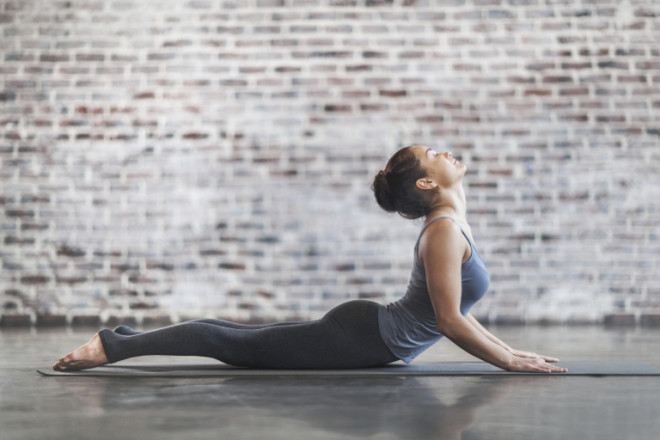
Less well-known than the more energetic forms of yoga such as vinyasa and ashtanga, yin yoga is gentle and slow but very effective at reducing stress and driving up energy levels. Spring is the perfect season to discover yin yoga, which is similar in some ways to meditation, and never fails to make an impact.
Yin yoga, which was invented about 20 years ago, is not concerned about the aesthetics of a pose, muscular strength or perfect alignment. It enables us to slow down and accept the feelings which appear in the present moment, without setting any objectives. At the crossroads between Chinese medicine, the slow approach of Taoism and the poses of Indian yoga, it is a meditative activity with a focus on deep breathing.
Unlike the other more energetic forms of yoga, the poses, which must be held on the floor between 3 and 5 minutes, require concentration and relaxation. The stretches are intense, reaching deep below the surface of the skin in connecting tissue, tendons, ligaments and joints, where there may be long-standing tension. Once this tension has been released, energy can circulate freely in the body.
Yin yoga counterbalances our fast-paced lifestyles, targeting our inner being. It can surprise fans of skiing, running, and the very physical forms of yoga, as it can be challenging for them to “do nothing.”
Typical yin yoga poses include the butterfly, the dragonfly, the child, the half-shoelace, the shoelace, the plow, the bell, the sphinx, the seal, the dragon and the camel. Yin yoga classes, which are accessible to all, use various props (cushions, bricks, bolsters, blankets, etc.) which help the body to relax and achieve a pose more easily (by putting your head on a block, rather than on the floor, for example). The poses can therefore be held comfortably for several minutes.
While yoga in general is known to be good for health, yin yoga is particularly good for managing stress, improving sleep, and stretching the back and the whole body. On the energy front, the opening and stretching poses revitalize the organs by following traditional Chinese medicine’s meridians. Immunity is therefore strengthened. And in the spring, working on the liver and gall bladder meridians can help with a detox. JB
RELATED STORY:
Home-cooked food, no TV during meals linked to lower odds of obesity